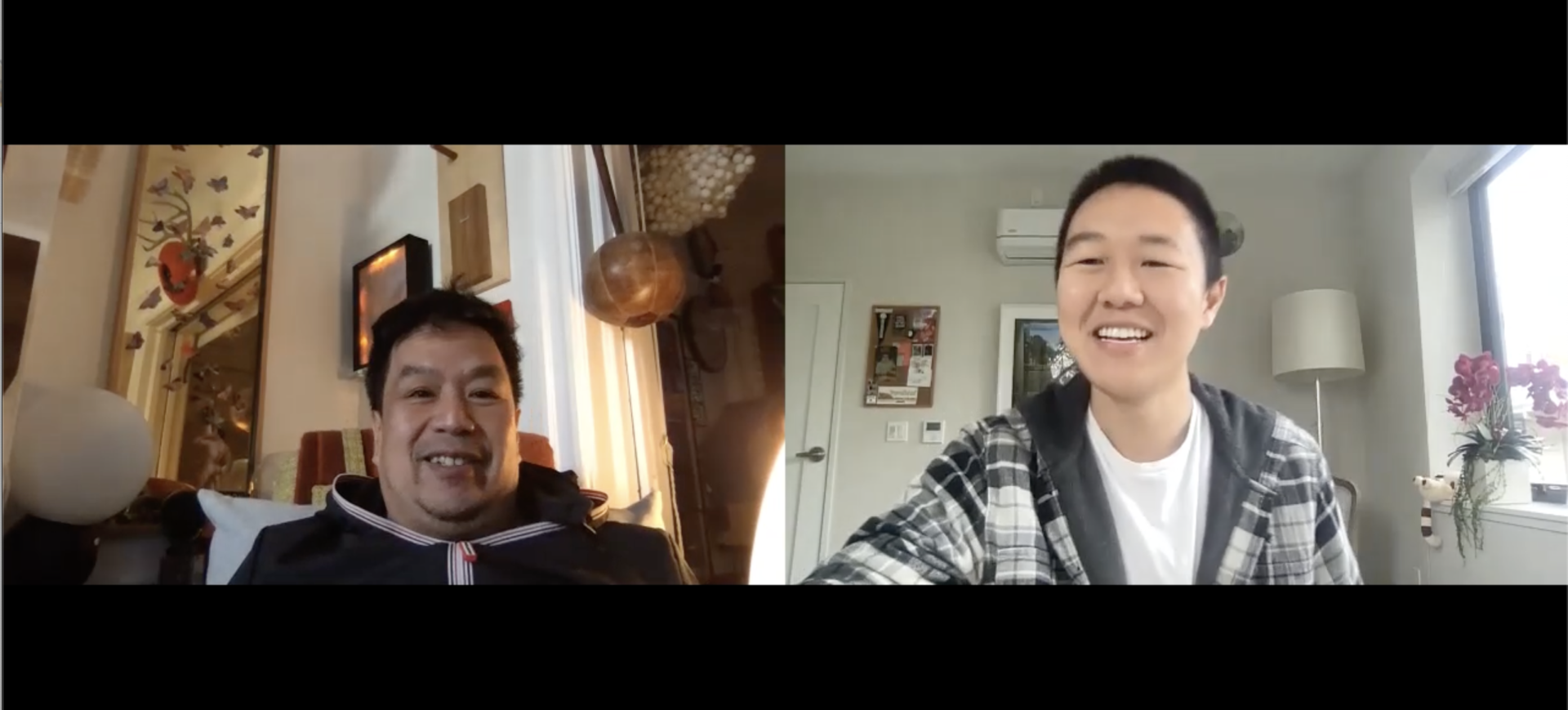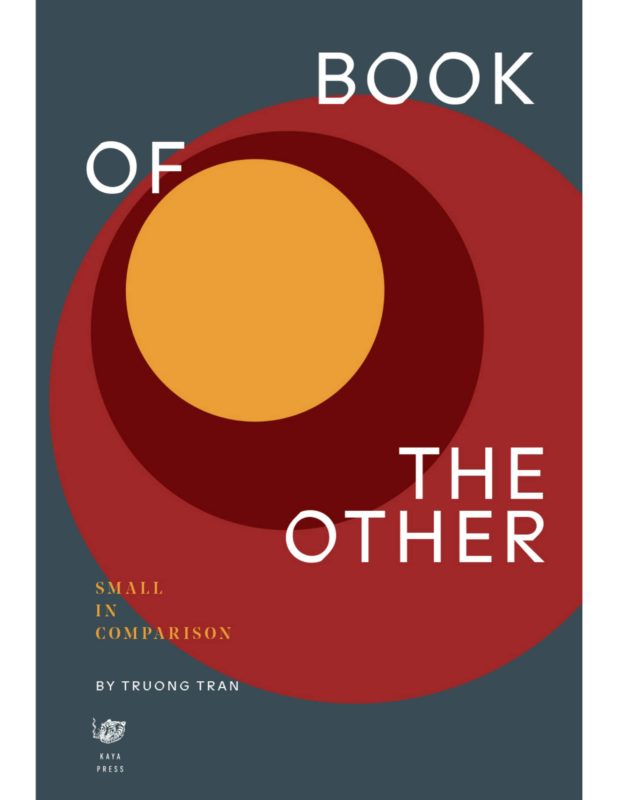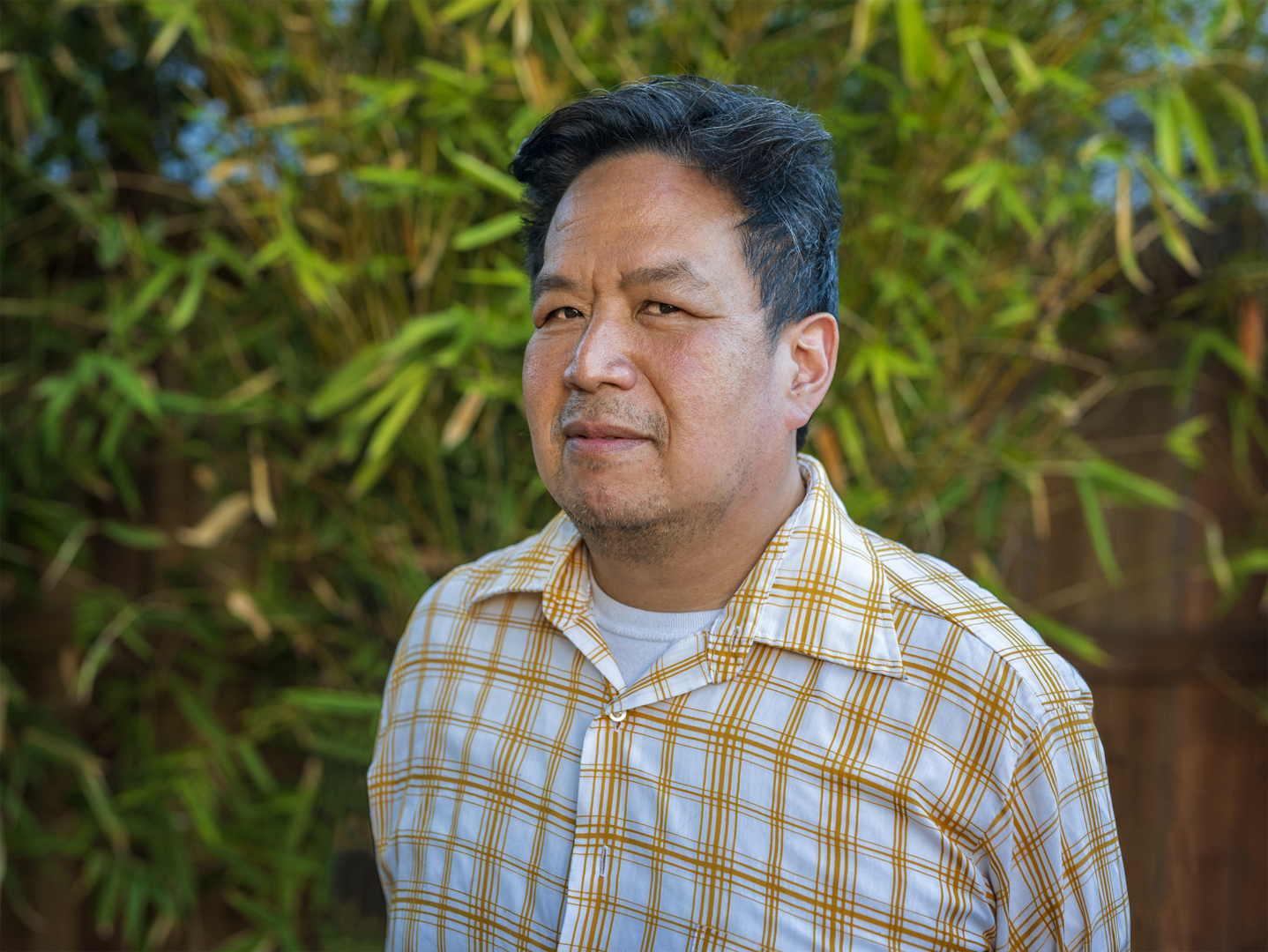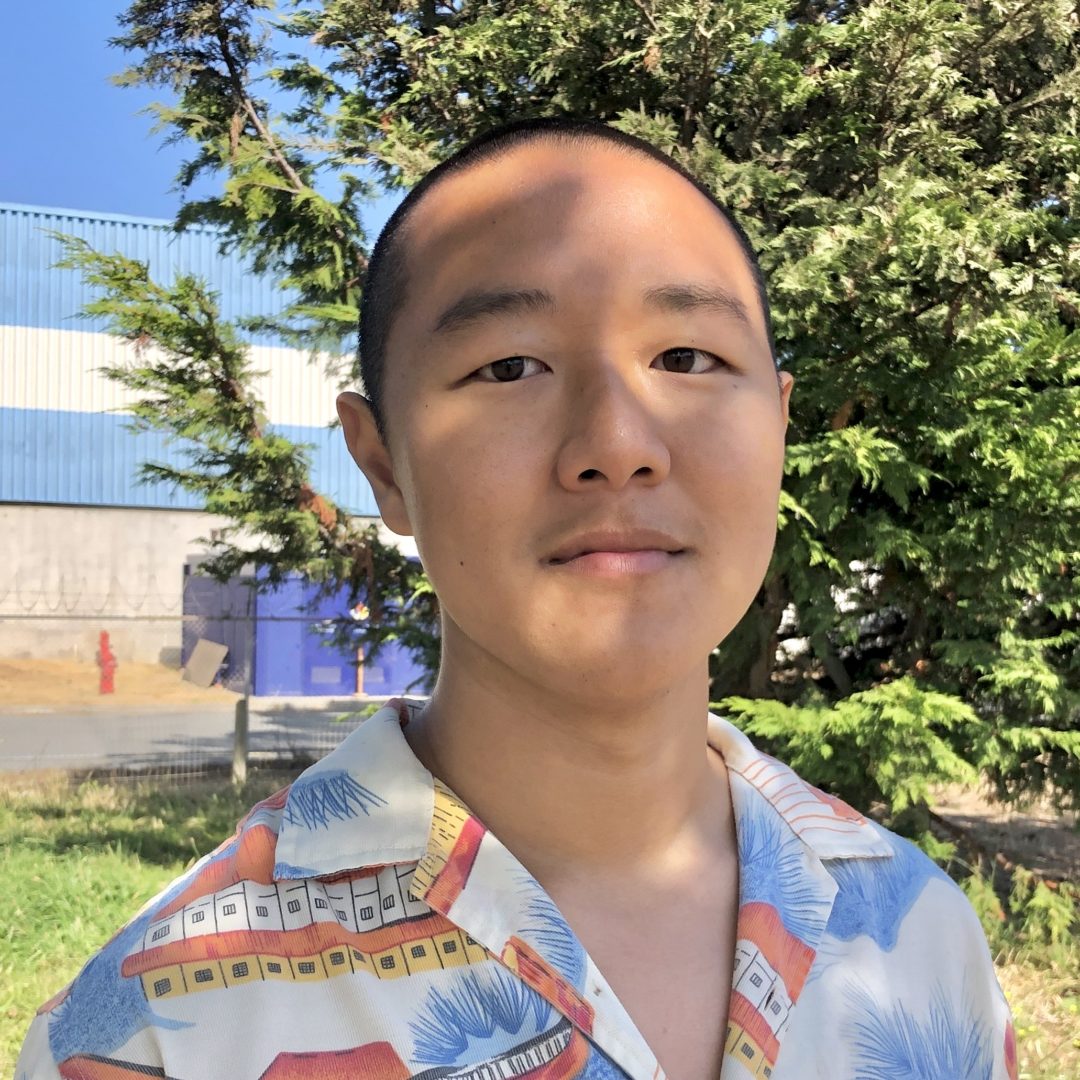Deputy editor Sydney Van To talks to Truong Tran about the dilemmas facing the ethnic writer, the double-edged nature of silence and metaphors, and the disruptive capacities of the footnote. Tran’s new poetry collection book of the other: small in comparison is out by Kaya Press.

Sydney Van To: One of the striking things about your collection is how much you care about being a teacher. I have come across poets who say that they are poets first and teachers second. It seems like it is the reverse for you.
Truong Tran: I thought that I wanted to be a poet. I wanted to write that book of poetry. But then it occurred to me somewhere along the way that writing was just a way to get me toward my work as a teacher. So, I write as a way of processing the work that I do as a teacher. And to my detriment in some ways, I will have to say. Because of this desire to protect my existence as a teacher, I was also willing to accept much of what happened to me in this book, all so that I could preserve my standing within the place of the academy. I had this moment, this memory, I wrote about it in the book, where I saw myself like it was an out-of-body experience and I saw the silence that I existed in. As I stood at front of a classroom, teaching my students how to enact their voice and claim their power through their voices. And there I was: silent and living a lie.
Sydney: When you write poetry from the mode of a teacher, it is not just about you presenting a lesson to your readers. It is also about you demonstrating what it means to properly be a life-long student.
Truong: To write poetry as a teacher is to write poetry that conveys to my students the struggle of existing in my own body, as a brown man moving through white spaces. And that is really at the heart of it. What does it mean for me as someone who identifies as: one, an Asian American; two, as a queer man; and three, as working class? The academy is a white space, and there are systems enacted upon us as persons of color within those spaces, that demand the response of silence. It is interesting because teaching was always about speaking to that silencing and encouraging my students to find their voices within those spaces. To speak up and speak out, to claim their identity and claim their power. But I was doing that while I was silent. Because what had happened to me was not to be spoken about. Somehow, I inherited that silence. I inherited the shame that comes with that silence. And I carried it throughout my time at the academy.
I wrote a previous version of this work in 2008, and it was called Four Letter Words. I wrote it in coded language, and to the extent that someone I wrote about in the book invited me into their class to lecture. They did not see themselves. When I was rejected yet again for a tenure track position in 2014, I knew that I had to write this book in no uncertain terms. I set out to write with the constraint of honesty. Easier said than done. I also came to the realization that as a poet, I invoke metaphors. But metaphor is a shelter. I create shelters for myself to hide in. But the problem is that you are not the only person who gets to hide in that space. The reader gets to hide in metaphor as well. And metaphor becomes a luxury within the space of the poem because it allows people to duck, hide, and get out of the trajectory of the poem. So, I made a promise to myself not to use metaphor in this book, although I don’t think I was entirely successful. Metaphor happens. I can’t help myself. Metaphor is kind of like an addiction. It happens habitually and out of necessity.
Sydney: One of the explicit moments in which metaphor appears is when you use it ironically. In a footnote, you write, “I will set my world. on fire. written as metaphor…again this is written as metaphor. this is stating the obvious. my fear is not not a metaphor.” Your point is that even when poets, especially poets of color, use metaphor, the grounding is very real, materialist, and in fact, anti-metaphorical.
Truong: I remember that moment very clearly. As a poet of color who is making a statement like that. There are those who will claim their fear of my language. And we all know what happens when someone white claims their fear of someone brown.
Sydney: I wanted to save this question until the end, but since we’re already here, I’ll just go ahead. You write, “my student he said. i cannot afford. the luxury of metaphor. and just like that. i was changed. my student she said. for some. the metaphor is. a necessity. and just like that. i am changing. again.” What kind of faith do you have in literature, as opposed to journalism? That is, in a fictional or poetic mode as opposed to a testimonial mode? If literature is simply that which allows the writer to process certain things, then the poetics seems like something that the reader has to get through in order to arrive at the real message, or that the metaphor is something to be deciphered in order to reveal the actual lived context. Then, we’re back at this whole problem of how ethnic writers are expected to write only memoirs.
Truong: There’s a lot in that question that I want to unpack, and I don’t know if I can do it within just one response. But let’s start with the consideration that the burden of reflection falls upon writers of color. And I am very aware of this as someone who teaches creative writing. I am aware of how the world has put that on us and asks us to carry that—as a challenge, and almost framed always as our privilege of being able to do the work of reflecting.
Sydney: Yes, this whole trope of the outsider’s perspective, of being able to look in on society.
Truong: Right, and if we’re going to talk about that, then we have to also talk about the privilege that white writers get to imagine. They get to look forward and project into the future. And there’s something about that projection into the future that then holds the perspective of white consciousness as the future. That’s something that I struggle with because we all have the ability to look forward and to look backwards. In the book, I say, “I want to write the imagined poem.” In another recent interview, I said that I don’t think that my book is very imaginative. And I accept that because I was still dealing with what was right in front of me.
As writers of color, when we talk about storytelling, we have to consider the notion of our performance in that space. I think in terms of my writing and how it works in the service of whiteness. When I construct a story, who am I telling that story to? When I read stories by other writers of color, I do have moments when I ask, “Is this story being told to me? Am I the audience?” And there are more times than not when I have to admit that, no I am not the audience. So often we are performing to the white gaze. We are performing our otherness to the white gaze. I speak about truth in my book, but I’m also aware that there’s an expectation of a kind of truth that is being conveyed. book of the other, in my opinion, is not the kind of truth which is expected or desired. It is the kind of truth which confronts the reader, and that is not what makes for popular or palatable literature. The desired literature of our time performs a notion of truth that allows the white reader to position themselves out of the trajectory of that writing. It is as if they are sitting in a theater and are looking for the best possible seat to witness the performance and still not be seen or implicated in the act of witnessing. In other words, you never go to a comedy to and sit in the front row and in full view of the comedian. You don’t want to become a part of the comedian’s set. My work tries very hard not to perform my otherness. My work is actually saying, “I may be standing on the stage, but I’m actually not acting or performing. You think you’re looking at me, but I’m looking at you.”
Sydney: The white audience is performing a script in which minority feelings are simply a narrative to be consumed. The trajectory of the narrative becomes a fantasy of which they believe they can step outside. They believe that they are not implicated.
Truong: They are not implicated but they are also positioned to claim ownership. The story of immigrant’s success is an American story. It is one that they can take pride ad comfort in. What happens when you reverse the gaze, when you stand on that stage and let it be known that you are looking at them. Case in point. There was a moment when a white writer connected with me and asked me to tell my story. When someone asks you to tell your story, your first reaction is to feel like, oh they see me. They want to hear my version of the story. I proceed to tell my story. And this white person looks at me and says, “Truong, that’s not what happened.” And she proceeds to tell me my own story. How is that possible? How do you hold that? If you don’t tell your story, someone will tell your story. They will tell it as they see it, and that is the silence that happens.
As someone working within the MFA writing program, the consideration of silence is framed as a craft inquiry. The invoking of silence on the page, the use of white space, the absence of language are all parts of this consideration of craft. But that craft, that invocation of silence only harnesses power when there is a recognition that your voice and your contribution is vital to the conversation at hand. That doesn’t work when they’re trying to silence you. You cannot meet their efforts to silence you with silence as protest. But I have got to say, sometimes we’re silent because we’re tired. We can’t always be in that mode of responding, responding, responding.
We are so conditioned into the consciousness of the other that our interactions with the reader or with the academy becomes a performance of otherness. Did I think that I was performing my otherness when I proceeded to explain where I’m from and how long I’ve been here? No, I thought I was in a conversation. But it got to the point where I thought, “Wait. Why am I divulging all of this?” There’s just this consciousness which precedes the conversation that we are the other and that this is not our place.

Sydney: Right. It seems like such an absurd thought to go up to a white person and ask them about their family’s story. It would never happen.
Truong: There are some moments that will stick with me forever. I was once invited to a classroom to be a guest to a conversation with two Vietnamese poets brought to the US to share their work. At some point, and I believe it might have been the professor himself who asked the poets to sing something in Vietnamese, some kind of folk song. Sure enough, the Vietnamese poets were very accommodating, and they sang on cue. I took such great offense to that moment. I can’t really be offended by the Vietnamese poets who are invited into this country. That was part of the deal. I could never imagine asking a white poet to sing “Oh Susanna” so that I may hear his inherent rhythms.
Those moments stick with you. Some people will say, “These moments just happen. You can’t let that define you.” It doesn’t define me, but it gets lodged inside my being and then you carry it. You carry it through life. You realize that once it happens, it’s always happening. It never goes away. The work of this book is an effort to put that weight down. Because one day, all that weight will come collapsing on you. I guess that’s why they’re called microaggressions. Because they’re little enough that you think that you can carry them, but then one day, the accumulation of those microaggressions becomes the weight that you find yourself buried beneath.
Sydney: Shame and guilt are usually internal responses to having done something wrong. But this is shame imposed upon us from the outside. This is shame which we are not responsible for. That’s the logic of being the other.
Truong: You are carrying the shame of someone else’s actions. You carry it through the enactment of silence. You carry it every time you look the other way and even more so every time they look away.
Sydney: You write about shame in a way which reminds me of Sianne Ngai’s concept of “ugly feelings” and Cathy Park Hong’s concept of “minor feelings.” Shame is this feeling which belongs to minority groups, which are unproductive, which cannot be properly treated in literature, which are repulsive. Are you writing about shame as to free yourself from it? Or is it something less hopeful?
Truong: I don’t think shame necessarily belongs to us. I believe that it’s placed on us, that we have inherited that shame. When I am putting down that shame, I am putting down someone else’s shame. Somehow, there was a transference of shame that happens when the act of violence takes place. Metaphorical or physical violence. Why would the woman who got punched in the face be ashamed for having been punched in the face? And I will tell you that there is shame to that. After people get assaulted, they don’t want to be seen. This book was an effort to put that shame down.
And I’ll be honest, there were people, including people in my own community, who didn’t think this book was the best idea. Because this book was doing something that was too explicit, as though it were messing with the decorum of the white world. My students are having this debate about how notions of professionalism are really positions which enact anti-blackness. I think there’s real truth to that. Because professionalism is framed in the context of whiteness, and what it means to exist in a white world. In a department meeting, someone will say, “We have to be mindful of teaching our students standard English because it’s a measurement and a standard of class in our society.” But whose standards are we talking about? These things are just woven into our consciousness. They are our starting points. As a person of color existing in that space, by default, I use those starting points to begin my inquiries. And if I don’t rethink those starting points, I am just working in the service of whiteness.
Sydney: This is one of the traps which you articulate in your book. On the one hand, we are frightened into silence. We are too afraid to express our rage. We feel the need to suppress shame which does not belong to us. But, on the other hand, when we do articulate rage and shame, it is received as a performance.
Truong: It is perceived as a performance, and if it continues, it will be framed as inappropriate and unprofessional.
Sydney: Right, this is circling back to the beginning of this interview. So what possibilities are open for writers of color if their own feelings, when too confrontational, are deemed unprofessional, and when too aestheticized, are deemed a performance? Your solution is writing the antipoem. But are there other ways forward?
Truong: There are two considerations. “Possibility” means, to me: what are you willing to do? But there’s also something else tucked into this, which is success and recognition. I’ve made the decision to write what I felt I needed to write. And I’m doing it with the understanding that I’m not writing this book thinking that it’s going to be a bestseller. I didn’t write this book to be someone else’s accidental entertainment either. My lived experience is not to be entertainment. I want you to be compelled by this book. I perhaps even hope that you are compelled into action. But I also recognize that this is a book that many will want to put down because it’s too hard. I wrote this book because I had to, so that I could put that weight down. But I didn’t do it so that I could somehow be received by the world. We all know that there are other works by writers of color who are really, really successful. And I think there is a clear path to how one creates that success. I am just not willing to do that.
Sydney: Do you feel as if you have been unburdened of shame now that you have written this book?
Truong: Yeah. Because I just posted on Facebook that I’m going to be doing many interviews with scholars and journalists and thinkers in the coming months. The old me would have said something to the extent of, “You’re going to get sick of me.” But the new me is saying, “Yeah. I got something to say. Take it or leave it. I’m going to say it.” So yes, something shifted in me. And to be honest, with every conversation, I feel a little more emboldened to say what I need to say.
Sydney: This has been such a wonderful interview. I feel changed. I feel changed in the way that you describe feeling changed at certain points in your collection. I have one more question, and this was actually supposed to be the first question, but we jumped so quickly into the heat of things. I want to ask you about the organization of the book and its sense of progression. It’s not a narrative progression, because the facts are laid bare at the beginning, and you repeat these facts throughout. It is not the culmination of anger either. The anger is also there at the beginning, and if anything, your anger just becomes melancholic by the end. It seems like the book rejects any kind of progression. It’s like the way you use the period as a hammer. These feelings are just hammered into the reader again and again in order to ensure that your message is clear.
Truong: It is interesting that you describe the period as a way of hammering something in. I’m hearing it as something like hammering nails into a structure. That’s a really interesting take because the period is a hammer, but it is simultaneously a hammer and a spoon. I was hammering my way out of this book, and I am digging away with this spoon in the hopes tunneling my way out. I have also described this book as a 15-round boxing match. There were moments when I had these flurries of punches, and I felt energized. But there were other times when it felt really exhausting. The experience of this book and the experience of living this book was really exhausting. So, I was writing to punch my way out of this book. And I did begin with anger because that was the point of entry. Anger was the impetus. But as I wrote the book, I began to understand that I can’t hold onto this anger constantly. I needed to find a way to temper my own voice because I could not sustain this note of anger. It would have broken me in some way. I tried to shift, throughout the book, to other moments of consciousness that took me away from anger.
The book was a forward movement. And then we get to the end, which I called “an afterword of sorts.” But really, it was another book. It was the book inside the book. It was the book that was written because my editor asked the question of why. Why would you do this to yourself? Why would you come back time and again and put yourself in a position where you knew that you were probably never going to be accepted? That is a question that I’ve heard before. But it is often framed by whiteness. As in, why doesn’t he just go away? But it’s different when it’s being asked by someone in your own community who is doing this work with you. My editor was there with me so much through the process of shaping the book. So, I answered this question of why by writing another book. And I wrote a book about the things that I couldn’t say in the book.
Sydney: I was thinking about the footnotes in the last section. You write, “there is no corresponding language for what im about to say…this book is breathing. because im still breathing.” Earlier in the collection, you had written, “flowers cut. are the corpses. to our witnessing. that the poem is a breath. but never quite. the act of breathing.” But finally, in these footnotes, you have this: the poem is breathing. You are signaling the evaporation of your own poetry, language which appears for a second and then must disappear right away because it can’t stay fixed in this way. It’s as if the afterword is just a gesturing, and that’s what the footnote is doing: it’s not really present at all. You can only point to all that you want to express about what you have gone through and knowing that language is inadequate.
Truong: There was much debate about the footnote because one of the considerations was that the poem should stay whole. That we should keep the poem whole on a single page so that the reader could read it as a poem, and then be introduced to the footnotes that follow. My argument was that the poem is the thing that was disintegrating, and the footnote was taking precedent. By the time I arrived at the ending of this book, I did not feel as though the original poem mattered. The footnote mattered. The footnote was constantly interrupting the poem. Someone had said, “I think you have it wrong, because footnotes come at the end rather than the beginning of a thought.” I said, “No, it comes at the beginning.” This is about disruption. The poem is completely undermined by the structure of the footnote.

Truong Tran was born in Saigon, Vietnam, in 1969. He is the author of six previous collections of poetry, The Book of Perceptions, Placing the Accents, Dust and Conscience, Within the Margins, Four Letter Words and 100 words (coauthored with Damon Potter). He also authored the children’s book Going Home Coming Home, and an artist monograph, I Meant to Say Please Pass the Sugar. He is the recipient of the Poetry Center Prize, the Fund for Poetry Grant, the California Arts Council Grant and numerous San Francisco Arts Commission Grants. Tran lives in San Francisco where he teaches art and poetry.

Sydney To is the deputy editor of diaCRITICS. He is currently a PhD student in the Department of English at UC Berkeley, with research interests in Asian American literature, critical refugee studies, and crime fiction.


